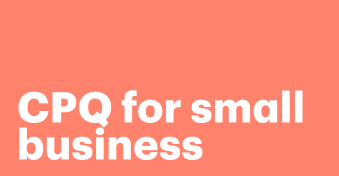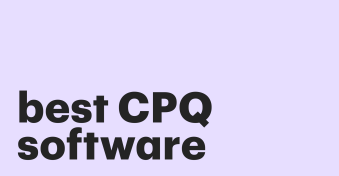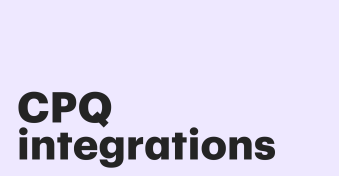Quote-to-Cash (Q2C or QTC) is a process that connects fairly distant points in the sales process.
From the moment a request for a quote is received and all the way to shaking hands over a contract and getting paid, QTC dictates how intermediate sales goals are achieved.
However, Q2C and CPQ are often used in the same context, which can be confusing. To make things easier, let’s define these terms and how to use them correctly.
Without further ado, let’s get into it.
Key takeaways
- Quote-to-Cash (Q2C/QTC) is a process that companies follow from the moment a quote request is received to the moment when the payment appears in their account.
- Q2C includes subprocesses and tools facilitating quote generation, delivery, negotiation, deal closing, invoicing, and receipt of payment.
- CPQ is part of the Q2C framework; it starts immediately upon receiving a quote request and focuses on heavily automated product configuration and quote generation.
- CPQ solutions can offer different sets of features, from quote generation only to a complete suite of tools addressing most of the Q2C framework.
- Adoption of Q2C and CPQ tools and procedures helps organizations stay competitive and substantially shorten sales cycles while achieving higher lead conversion and sales volumes.
What is the quote-to-cash process?
Q2C is a procedural framework that regulates how organizations process sales opportunities and focuses on fast and accurate quote/proposal generation and management.
It is very important to understand the boundaries of Q2C, as it does not cover the entire scope of a typical sales funnel.
The quote-to-cash process starts exactly when a potential customer requests a quote for a product or service and ends when payment (full or partial) for said service or product is received.
In reality, the Q2C stage can be preceded by a variety of marketing activities resulting in sales opportunities and followed by post-sale activities that may include efficiency analysis, cross/upsell planning, and process improvements.
In summary, the quote-to-cash process is a segment of the overall sales and marketing workflow that aims to turn sales opportunities into actual money in the company’s account.
The benefits of quote-to-cash
Q2C is a highly valuable framework for businesses.
Here’s what it can offer:
- Streamlined workflow: Q2C automates key processes like quoting, invoicing, payment collection, and more so that companies have fewer errors and delays in the sales process.
- Improved cash flow: Faster invoicing and payment collection means companies can increase cash flow and decrease waiting time for payments.
- Efficient sales: Q2C automation allows sales teams to focus on higher-value tasks while the tech handles routine admin duties.
- Elevated customer experiences: Quicker, more accurate quotes means higher customer satisfaction and, ultimately, higher conversion rates and repeat business.
- Better financial insights: Integrated Q2C systems give you real-time visibility into performance and revenue, leading to improved decision-making.
What is the difference between CPQ and Quote to Cash?
To better understand the difference between the two, let’s define each term first:
CPQ (Configure, Price, Quote) – This is a sales tool that helps companies create accurate, customized quotes for customers. It automates the process of configuring products, determining pricing for those products, and creating professional quotes for the products. CPQ streamlines the sales team’s workflows by ensuring fast, accurate quotes.
Q2C (Quote-to-Cash) – This broader end-to-end framework covers everything from a customer requesting a quote to the final revenue of the sale. CPQ is an important step within the framework, but Q2C also covers contract management, order fulfillment, billing, payment collection, and revenue recognition.
How does CPQ fit in the quote-to-cash process?
Think of CPQ as the entry point in the Q2C process—it plays a crucial role in the earlier stages of the sales cycle, focusing on streamlining the configuration of complex products, setting the right prices, and creating accurate, professional quotes.
Now, let’s break down the differences between these two intertwined processes.
Remember, CPQ is an essential part of Q2C, but Q2C covers the entire sales lifecycle.
CPQ (within Q2C framework)
- Configure: Determine customer needs and tailor product or service offerings.
- Price: Establish pricing based on the configuration and customer.
- Quote: Create and present a quote to the customer.
Q2C
- Negotiate: Discuss and adjust terms and pricing as necessary.
- Contract: Finalize and agree on a contractual agreement.
- Order: Process customer orders based on the contract.
- Invoice: Bill the customer for the product or service.
- Collect: Receive and process payment from the customer.
- Recognize: Acknowledge revenue and report it financially.
You’ll notice that Q2C is the wider framework, and CPQ is its integral part that focuses on the front end of the sales process.
More on how they work together in the following section.
Integrating CPQ and Q2C systems
It’s important for CPQ and Q2C systems to be able to seamlessly integrate with one another—this makes for easier workflows across the whole sales process. Here’s how they do it:
- Kickstarting the sales process, CPQ provides accurate, custom quotes for products that have been configured to meet the client’s needs.
- After the quote is accepted, Q2C tools work to handle contract management, invoicing, and payment collection.
- A CRM or ERP system can connect CPQ and Q2C systems to ensure data flows smoothly between platforms. PandaDoc offers native CPQ integration for major platforms like Salesforce and Hubspot.
To eliminate manual data entry, integrations are key in making sure pricing, quotes, and customer information are consistent across the sales cycle.
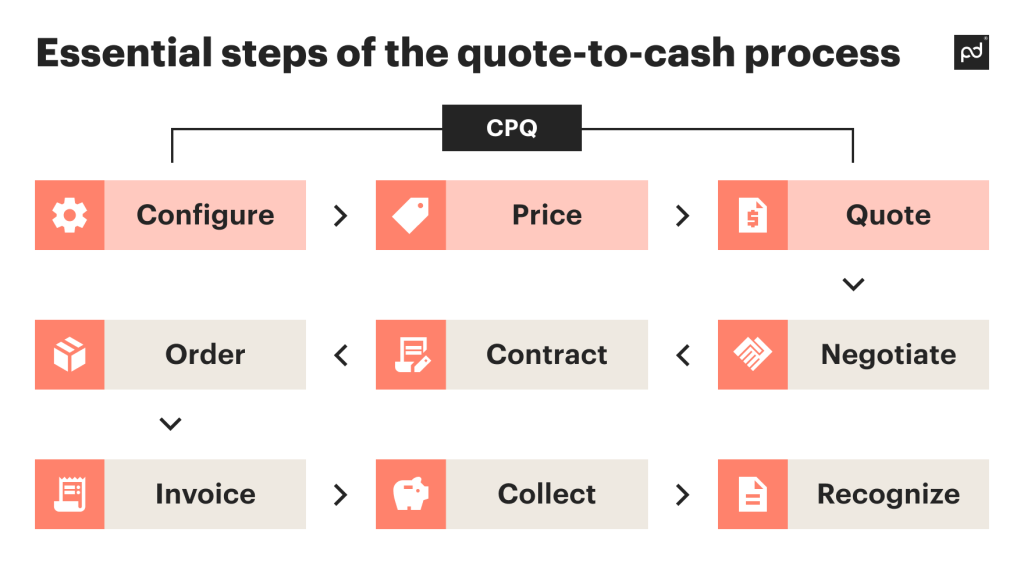
How CPQ supports the Q2C process
Configure-Price-Quote (CPQ) is a subprocess of Q2C that varies greatly from company to company in terms of the level of its automation and efficiency.
It is also a set of tools and practices that facilitate and accelerate the creation of accurate, comprehensive quotes to be presented to the customer.
CPQ is the entry point in the Q2C process — its importance should not be understated.
This statement holds all the more true for complex, configurable products with a variety of modifications, options, upgrades, and accessories.
Manual configuration of such products requires highly technical sales reps or, most often, detailed quote reviews by technical teams, resulting in very long sales cycles — something you want to avoid at all costs.
The most important thing, however, is that the CPQ process at any given company typically has massive optimization and automation potential.
While some businesses still invest countless hours of manual labor to come up with quotes (and drown in inefficiencies), others thrive in a fully automated CPQ environment based on modern CPQ tools, CRM/ERP systems, and powerful proposal management platforms.
Therefore, CPQ supports the overarching Q2C process by minimizing the time and effort required to produce a high-quality, detailed, and error-free quote and push it forward in the Q2C workflow.
Benefits of CPQ software
The benefits of CPQ software are hard to overlook.
Everyone can sell complex products
First and foremost, CPQ enables regular sales reps with no serious technical background to configure products of any complexity without having to consult with the product team, saving time and money for the company.
They work with a wizard-like interface to build the requested product configuration from the ground up while the CPQ software takes care of part compatibility, suggests upsell and cross-sell options, applies discounts, and pulls up-to-date part data from the company’s product catalog, PIM or ERP system.
Say goodbye to configuration errors
The second advantage of a CPQ-based approach is that it effectively rules out the possibility of misconfiguration and incorrect pricing.
Predefined rules ensure that the final configuration will not have incompatible components while prices are taken directly from the ERP system and do not require validation.
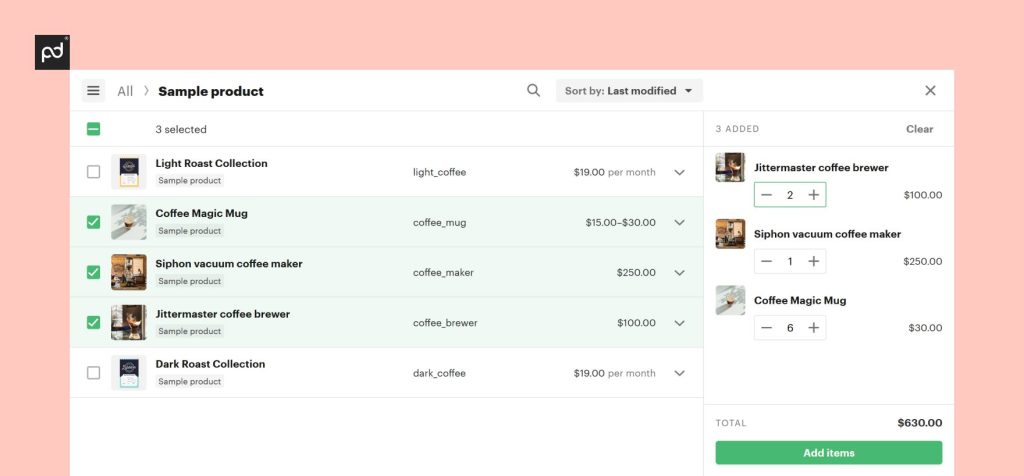
Quote faster, sell more
The third benefit of implementing CPQ is the ability to quickly create very detailed quotes that get the customer’s questions answered right away, so your sales reps avoid prolonged back-and-forth via email or phone to clarify details.
On top of that, modern CPQ tools cover a wider segment of Q2C, and also offer proposal generation, document management, electronic signatures, and payment functionality in a single product.
In summary, the use of CPQ software leads to higher conversion and close rates, faster sales cycles, and better scalability of your sales operations because your reps no longer have to be product gurus and can be onboarded very quickly.
The right solution for all your quoting needs
If you are new to modern sales automation, adopting every single principle of Q2C and CPQ to the fullest may seem challenging.
However, it doesn’t have to be.
A good starting point would be to pick a well-rounded solution that will cover as much of your sales processes as possible and then decide which aspects of it you’d like to improve further.
PandaDoc offers a host of value-packed tools that will help you bring the much-needed automation to your Q2C process:
- CPQ functionality with a product catalog and configurable rules
- Seamless integration with a variety of CRM systems and payment gateways
- Hundreds of proposal templates and a convenient editor to create custom ones
- Quote/proposal status tracking
- Integrated eSigning tool
- Invoicing and easy connectivity with payment gateways
To get a better idea about PandaDoc and how PandaDoc fits your needs, book a demo right away or sign up for a 14-day trial and see everything with your own eyes.
Disclaimer
PandaDoc is not a law firm, or a substitute for an attorney or law firm. This page is not intended to and does not provide legal advice. Should you have legal questions on the validity of e-signatures or digital signatures and the enforceability thereof, please consult with an attorney or law firm. Use of PandaDoc services are governed by our Terms of Use and Privacy Policy.
Originally published April 29, 2024, updated February 28, 2025
